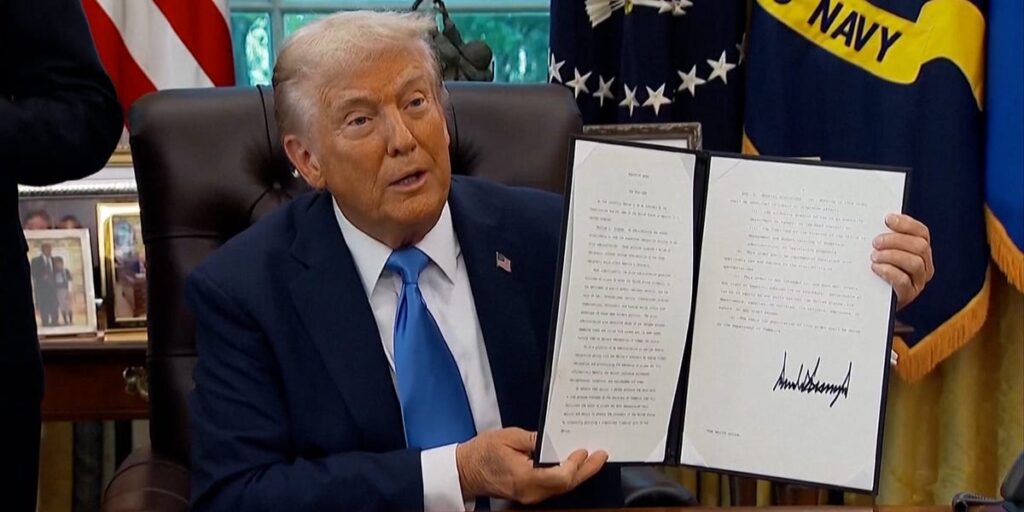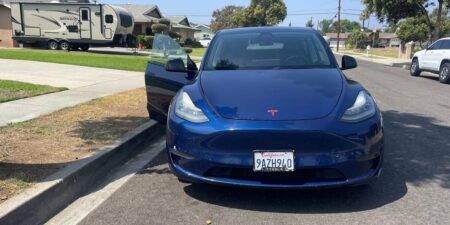The higher price tag for coveted H-1B visas might drive up employers’ costs, but not necessarily their appetite for US workers.
That’s one possible result of the Trump administration’s recent decision to raise the cost of these special visas, meant for skilled workers that employers can’t find in the US, to $100,000, researchers who study the issue told Business Insider.
Faced with higher costs to bring in foreign workers, some US firms could look overseas for remote workers before they turn to domestic ones. That wouldn’t be great news for the US job market.
On top of that, if the overall US economy is weakened by a drop in skilled foreign workers — and innovation more broadly — that could hurt US growth and cut into demand for a range of jobs, these experts said.
That would run counter to the aims of President Donald Trump, who said the changes are meant to push employers to hire US workers rather than international ones.
The president’s actions discourage companies from “spamming the system and driving down American wages,” White House spokesperson Taylor Rogers told Business Insider in an email.
“No ‘economic study’ can change the reality lived by many Americans across the country who bore the brunt of the massive abuse of the H1-B system,” Rogers said.
The changes to H-1B visas will likely ripple through the economy because, right now, US employers are bringing in up to 85,000 international workers a year under the program.
Business Insider spoke with five labor market observers about the impact of the fee hikes.
A possible boost to offshoring
Most research suggests that companies don’t respond to visa restrictions by hiring more local workers, Britta Glennon, an assistant professor of management at the University of Pennsylvania’s Wharton School, told Business Insider.
Some US multinational companies are already using strategies to offshore jobs, she said. With the latest H-1B changes, “they’re just going to intensify that,” Glennon said.
“Unless there is a strong need for them to be in the US, they’re probably going to try to offshore them,” she said, referring to multinational firms.
Glennon found that for every H-1B visa that large US companies with overseas operations didn’t get, they hired about 0.4 workers abroad. For the firms that were already set up to favor those overseas operations, the ratio rose to about 0.9.
If companies do hire more US workers, it’s often not a one-to-one ratio for every H-1B visa that’s lost, Glennon said.
How foreign workers affect local demand
Casual observers often assume that there is a fixed set of jobs in the US, said Glennon. Instead, what often plays out when foreign workers arrive in the US is that employment grows because the presence of the foreign workers creates added demand in the economy.
That, ultimately, can lead to an increase in overall employment rather than a scenario where a foreign employee simply takes a role that would have otherwise gone to a US worker.
“There’s sort of a multiplier going on here,” Glennon said.
She said the H-1B changes are likely to disproportionately hurt employers such as startups and universities. They won’t have the same resources to compete with tech giants or big financial institutions, for example, which tend to rely on H-1Bs.
The median wage for H-1B workers was $120,000 as of late 2024, according to the US Citizenship and Immigration Services, a federal agency. That’s roughly double the median pay of all US workers.
Madeline Zavodny, an economics professor at the University of North Florida, told Business Insider that if US employers bring in fewer H-1B workers, that could reduce demand for roles that support those workers — people in HR, marketing, and other IT colleagues.
“Americans should be very concerned,” Zavodny said.
Zavodny said that for some early-career, but not entry-level workers, employers have some ability to swap in other US employees when they can’t get H-1B visas. For other workers, Zavodny said, the visa doesn’t tend to take jobs that US workers would be likely to fill and instead leads to more hiring overall.
Wharton’s Glennon said that extensive research shows that skilled immigrants punch above their weight when it comes to innovation and entrepreneurship.
One review found that, as of 2025, some 46% of Fortune 500 companies were founded by immigrants or their children.
Trying to get companies to hire US workers rather than the ones who are most skilled — regardless of where they come from — risks damaging the country’s competitiveness in areas like innovation, Steven Durlauf, who runs the Stone Center for Research on Wealth Inequality and Mobility at the University of Chicago, told Business Insider.
Changing the program
Not all observers see risks from the new H1-B setup. Ronil Hira, an associate professor in the political science department at Howard University, said other recent changes enacted by Trump, including an effort to ensure employers are complying with rules for H-1B visas, will improve the skill sets, wages, and working conditions of people in the H-1B program. That would ultimately be a win for the US economy and its workers, he said.
Hal Salzman, a Rutgers University professor of planning and public policy, said that the H-1B program often brings in workers who will accept below-market wages.
He told Business Insider that salaries have been generally flat for about two decades in areas where guest workers are concentrated. Salzman doesn’t expect that H-1B restrictions will result in companies shifting IT jobs offshore, for example, even if doing so could reduce employers’ labor costs.
“If they could have done it, they would have done it 20 years ago,” he said, referring to large US companies. Instead, Salzman said, some IT offshore companies have expanded their workforces in the US.
One reason it’s not easy to offshore, Salzman said, is that in order to make operations work, employers often need roughly one-third of their workers in the US. That means it places a practical limit on the share of workers that a company could send elsewhere.
Zavodny, from the University of North Florida, said, however, that the $100,000 price tag could push some organizations to look abroad.
“That’s a lot of money per worker,” she said.
Do you have a story to share about your career? Contact this reporter at [email protected].
Read the full article here
















